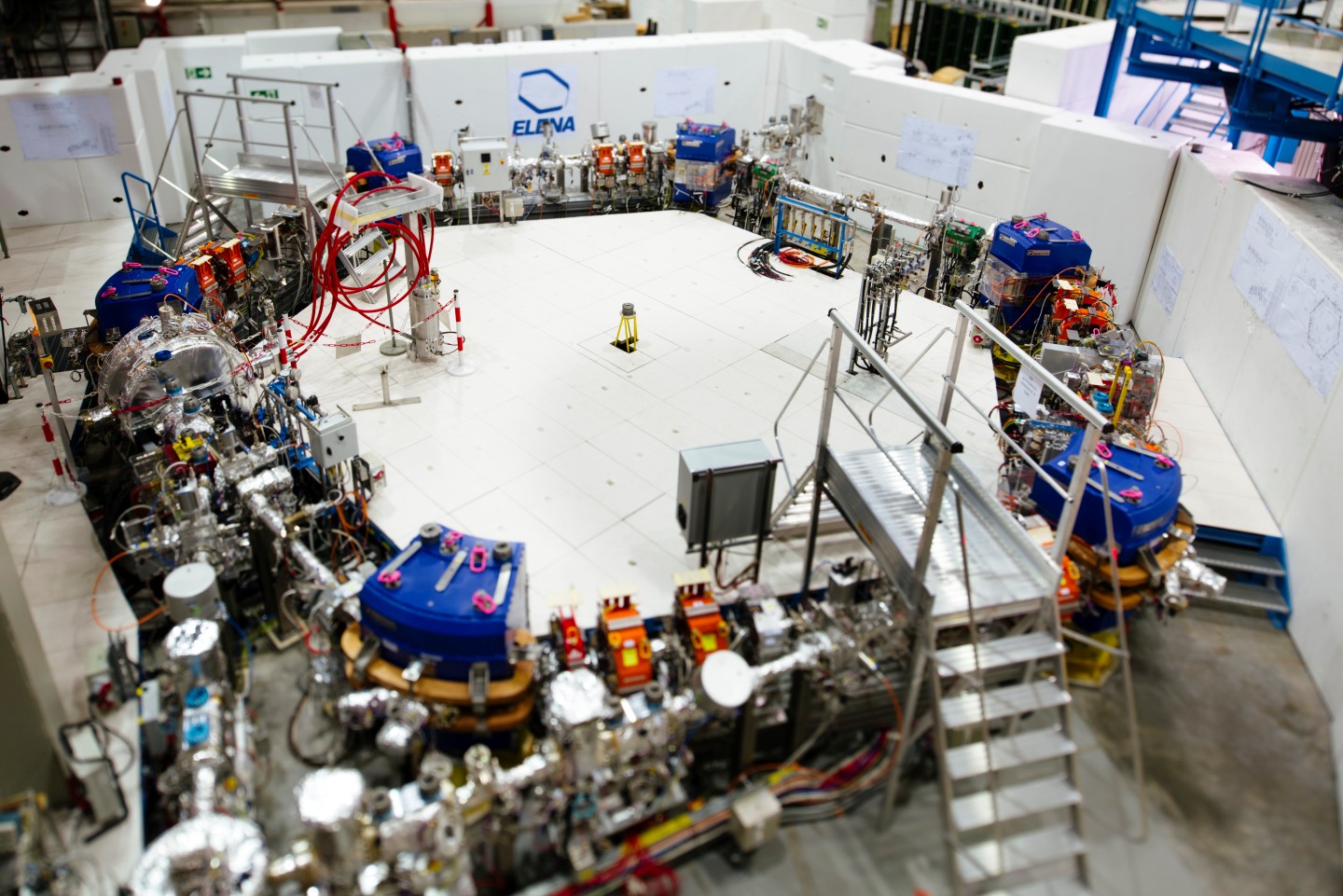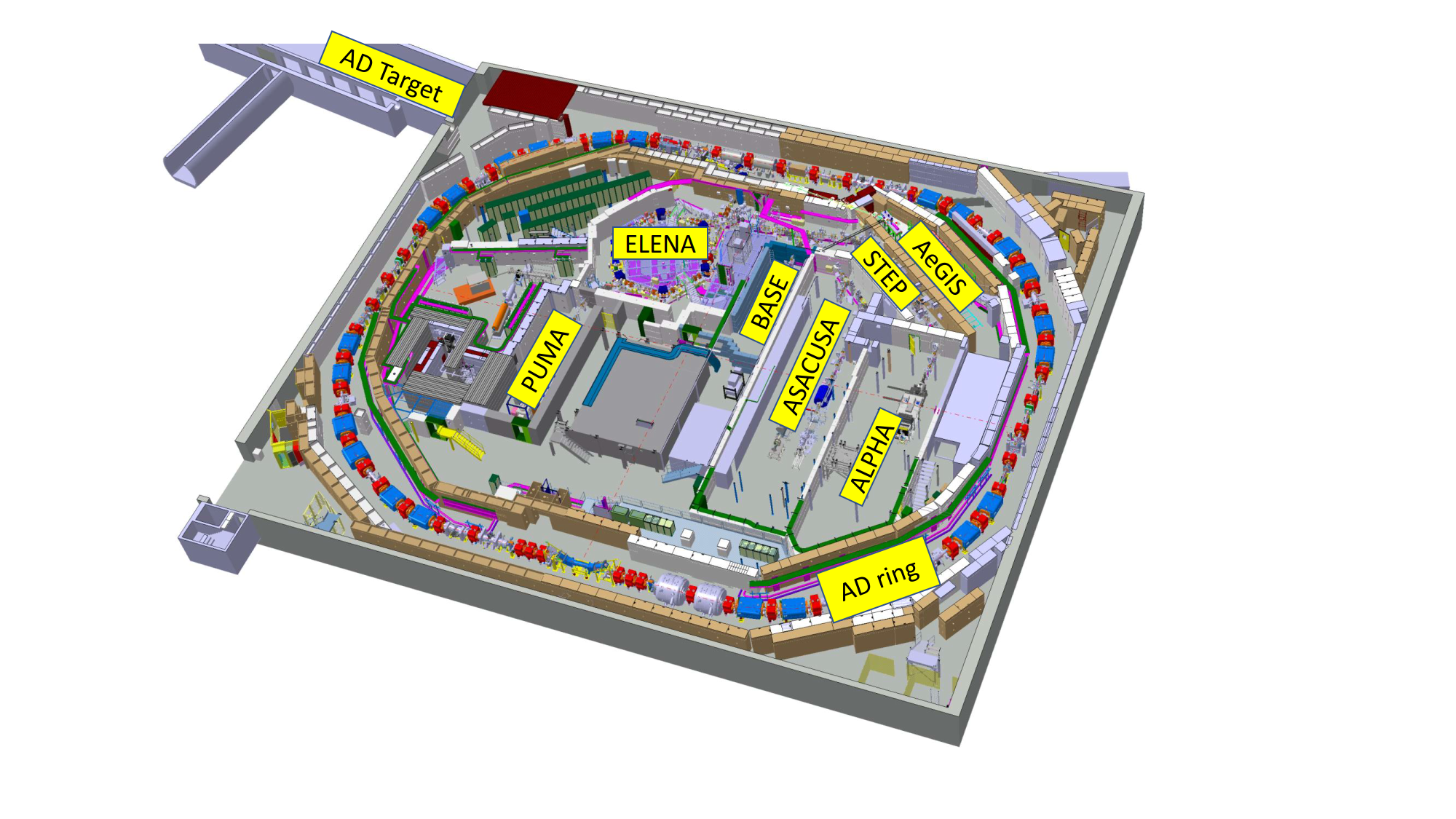
The AD/ELENA complex is a “mini-CERN” in itself, with, nestled in AD hall (Building 193) and adjacent buildings:
- A proton target intercepting the PS beam from TT2 tunnel to produce antiprotons.
- A magnetic horn and dog leg focussing and selection system to inject the antiprotons produced into the transfer line 6000.
- The main deceleration synchrotron AD ring, to bring the energy of the antiprotons to 5.3 MeV, while cooling the beam (reducing transverse energy and longitudinal energy dispersion) with 2 systems acting in sequence: the stochastic cooling and the electron cooler. AD can deliver to ELENA via line 7000 some 3.107 antiprotons every 100 seconds.
- The brand-new ELENA deceleration synchrotron, to bring the energy on antiprotons to 0.1 MeV, and cool the beam with another electron cooler. ELENA can deliver up to 4 bunches to 4 experiments simultaneously. The vacuum required in ELENA ring is of the order of 10-12 mbar, calling for a completely NEG pumped system.
- An ion source, producing either protons or H− ions mimicking the 0.1 MeV antiprotons. This source is extensively used for commissioning ELENA and the experiments when the AD is not delivering antiprotons. It can even be used for machine development in-between the delivery of successive antiprotons bunches from AD.
- A hundred meters of electrostatic transfer lines, to guide the antiprotons to their final users, the AD experiments, with sophisticated beam position and profile measurement systems.
- Seven experiments located at the extremity of the transfer lines (Aegis, ALPHA, ALPHA-g, ASACUSA Cusp, ASACUSA antiprotonic Helium, BASE and GBAR), using the delivered antiprotons to perform a multitude of measurements, analyses. These experiments are actively looking for answers to some of the most basic and intriguing questions of particle physics and of our universe, like why is there apparently so much more matter than antimatter in our observable universe, are there subtle differences between matter and antimatter apart from the electric charge, how does antimatter react in the earth gravity field?
- Two antiproton traps that can be transported to remote locations to perform off-site measurements: PUMA will use antiprotons stored at ELENA to perform nuclear physics on exotic atoms at ISOLDE and BASE-STEP will perform ultra-precise measurement on stored antiprotons requiring a “calmer” environment than the AD hall, full of magnetic stray fields in this buzzing environment.

ADTC Mission : The BE-EA group ensures the technical coordination (TC) of the AD/ELENA complex, organizes all infrastructure works, prepares and coordinates the YETS/LS activities.
AD-CONS project : The BE-EA group holds the responsibility of managing the AD-CONS project, in collaboration with all involved service and specialists groups, within the CERN wide program of ACC-CONS. The AD-CONS project consists in organizing the consolidation of the AD/ELENA complex, in order to ensure the smooth operation of the machines and allow experiments to reach their physics goal, with a vision till year 2040.
The schedule of meetings and presentations attachments for the Antiproton Decelerator Technical Committee (ADTC) and the Antiproton Decelerator Consolidation Project (AD-CONS) can be found under this Indico link : https://indico.cern.ch/category/9614/
